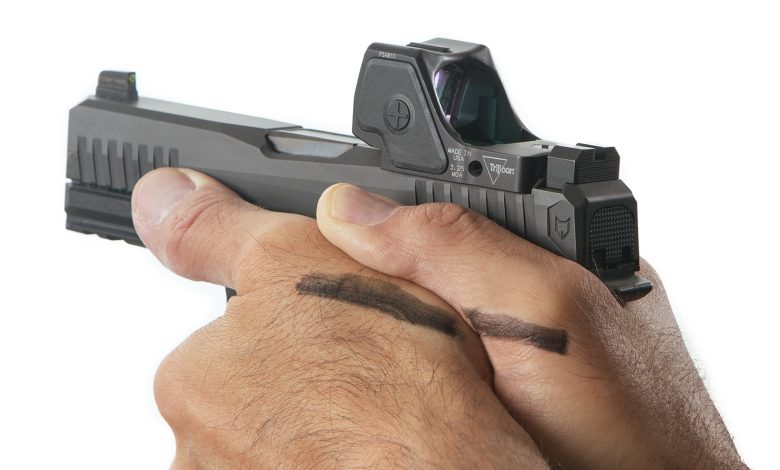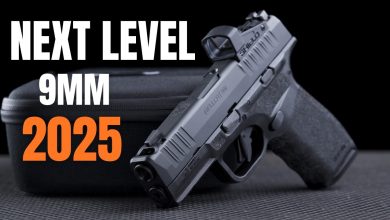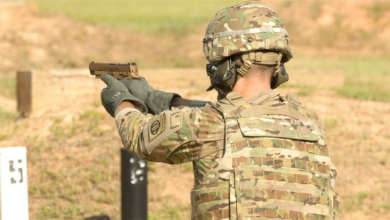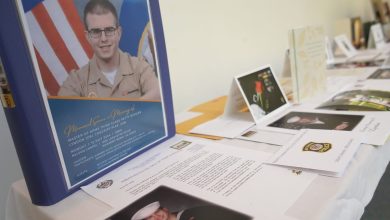Learning Takes a Lifetime

I was reading a survey recently which claimed a majority of people, regardless of their age, thought music was best in their late adolescence and early 20s. This is understandable, because that’s the age when most people are most intensely engaged with music, as well as experiencing many significant life events for the first time.
You’re more likely to get heavily imprinted on the music of your first date—or the album that got you through your first breakup—than whatever happens to be the background radio noise during your commute to work in your forties. That’s why most folks’ favorite songs date from when they were young.
Some people, though, remain more heavily into music over the years. Perhaps they’re in a band, write music reviews for a living or they’re just avid fans. These people are more likely to find new favorites or explore different genres than the general public.
The technique of pistol shooting can be the same way. The first few times at the range with a handgun are a real big deal for most folks, and you’re likely to imprint pretty strongly on the first pistols you tried, the words of wisdom from your dad/cop friend/whoever took you to the range that first time and the coaching from the instructor at your first concealed-carry class.
For most people, that’s about as far as it goes. Shooting isn’t a hobby, nor are guns a lifestyle for most firearm owners. They’ll get to the range a couple times a year, maybe, and 20 years from now they’ll still be shooting the same way they were when they started out. They may retain some of the basics, or they may not.
The fact that you’re reading my column in this magazine indicates that you’re probably a little more into shooting than the statistically most common handgun owner. Like the music enthusiast who seeks out new bands to listen to, you’re probably more open to broadening your shooting horizons than Joe and Suzy Average. Perhaps you seek out coaching from different instructors in order to learn new techniques. I know I do.
For instance, as a traditional iron-sights shooter, I’d spent years learning the habit of focusing hard on the front sight, which is a weird and unnatural thing to do when you think about it. Imagine, if you will, trying to get a bullseye in darts by staring at the dart in your hand rather than the dart board, or hitting a baseball by focusing intently on your bat, rather than the ball. Heck, we’re always told that the operative word in “gunfight” is “fight,” not “gun,” but you don’t see boxers visually locked in on their own fist when they throw a punch.
All that work to learn the unnatural habit of staring at the front sight had to get unlearned when I started learning how to use red-dot optics, which only really work right if you focus on the target. I was worried about how this would affect me when going back and forth between dots and irons until I heard friends of mine who are competitive shooters, like Tim Herron and Annette Evans, talking in passing about how they shot target-focused even using iron sights.
“What voodoo is this?” I wondered, until I happened to get a good explanation from trainer Tim Chandler at FPF Training. He talked about thinking of the rear-sight notch as a window. You don’t look at a window, you look through it. If you’re looking through the notch of the rear sight and the target is in that window and so is the front sight, you’re going to hit the target. Mind. Blown. Sure, if I want to shoot the tiniest group possible at 25 yards, a hard front-sight focus is preferable, but a 3×5-inch target at 7 yards or an A-zone out at 15 yards or so doesn’t require that.
I’m still working on it, because that front sight is a real magnet for my eyes, but I think shifting to a consistent target focus will be of benefit for me, especially for the advantage in working with both dots and irons.
I’ve had some similar revelations in how I grip a pistol over the years. My first really serious handgun class was with Todd Jarrett at Blackwater, way back when it was still Blackwater. Up to that time it had mostly been “Hey, just, you know, choke up on the gun so there’s no gap between the web of your hand and the rear tang on the grip—oh, and make sure the pistol’s lined up with the bones in your forearm for recoil control.”
Jarrett was the first person who showed me how to build a good two-handed grip on a pistol and it was also from him I learned a handy coaching tip: When you’ve got that student’s grip built properly, take a felt-tip marker and draw a single line across both their thumbs. That way, for the rest of the day, every time they line up on the target, they can glance at their hands to see if the lines mate up, indicating their grip is consistent.
It was also from Jarrett that I learned the importance of a good, firm grip, not only for recoil control, but also to ensure that the sight picture doesn’t waver during the trigger press. A good grip can cover a multitude of trigger-press sins. Most “You’re jerking the trigger!” diagnoses from the helpful dude at the local range are actually grip issues; spasmodically clenching the grip in preparation for the bang.
I learned from Scott Jedlinski of Modern Samurai Project that most of the gripping pressure when firing two-handed should actually be coming from the support hand, but every now and again when shooting at speed, my strong-side thumb would betray me, and I couldn’t figure out a sure-fire way to make it stop.
That piece of the puzzle came from Chris Cerino at Range Ready down in Louisiana, who finally explained in a way that made it click for me. The firing hand is ideally only exerting pressure on the grip via the frontstrap and backstrap. If I was squeezing it with my thumb included, like I was trying to crush a beer can, I was interfering with my own trigger press. If I really wanted to make it stop, and keep my thumb from messing me up, I could just flag that strong-side thumb straight up. As long as the joint at the base of the thumb was locked and pressing forward, the rest of the thumb didn’t really have anything to do, so I could just get it out of the way. It was a “lightbulb” moment for me, and I watched my shooting improve almost immediately.
The important thing about learning the new stuff, though, is to get to the range and practice it, so it gets incor- porated into your regular shooting routine. Eventually, that new skill or approach will become as familiar to you as that old favorite song.
Read the full article here







